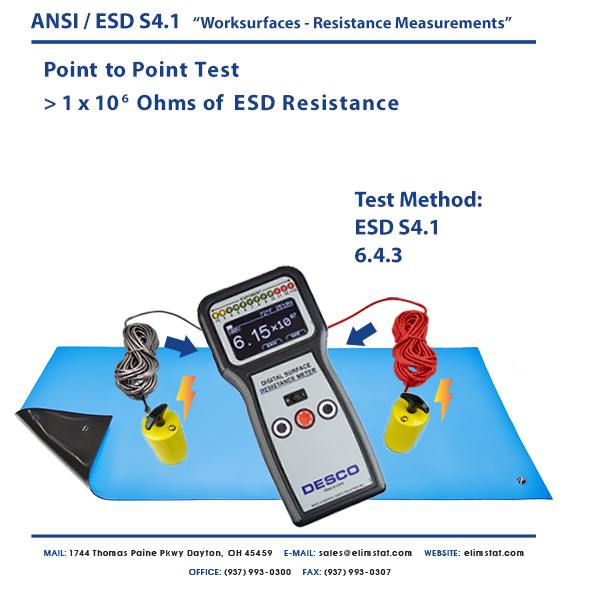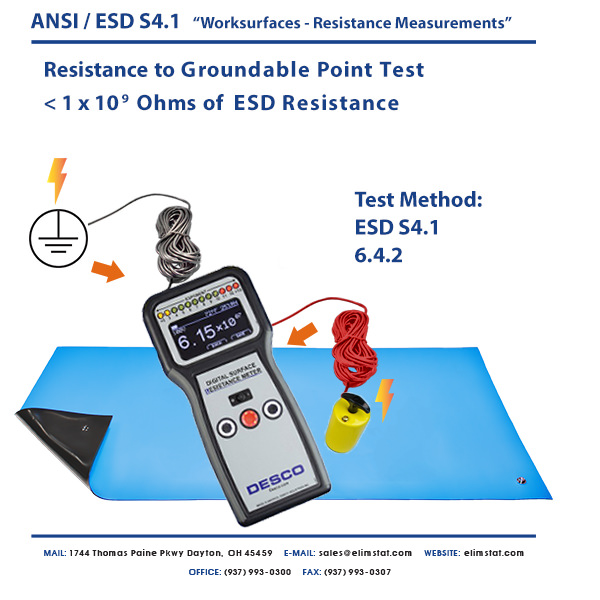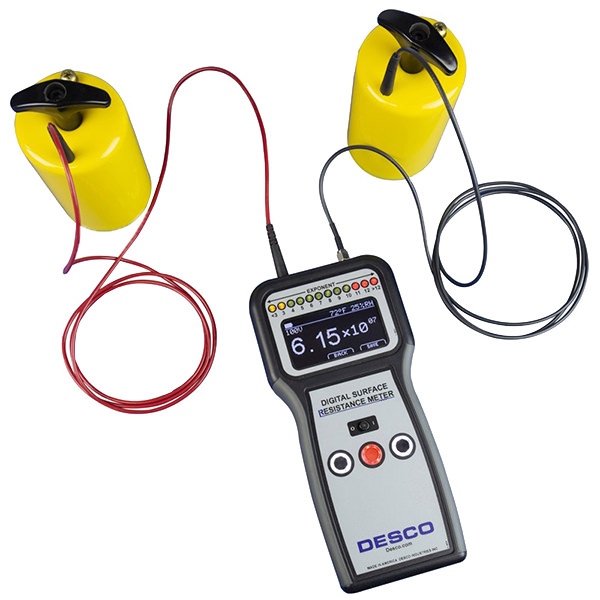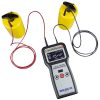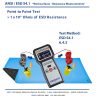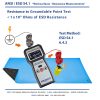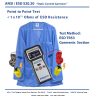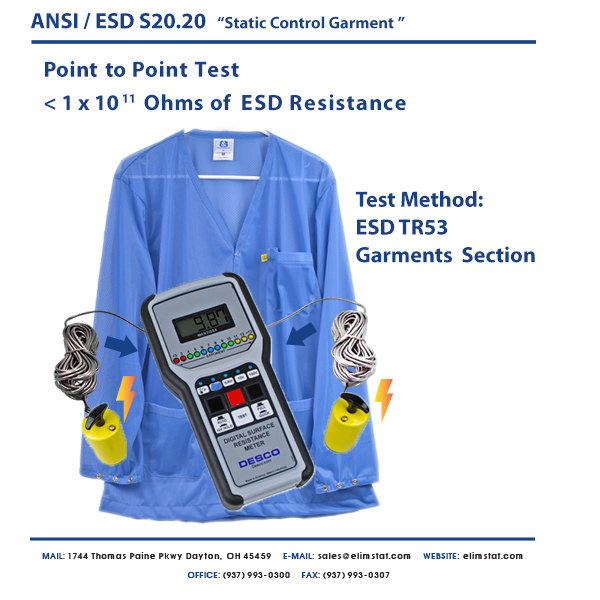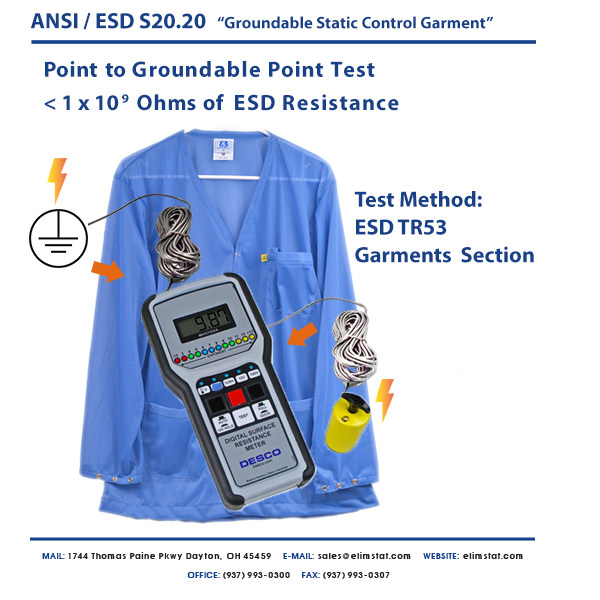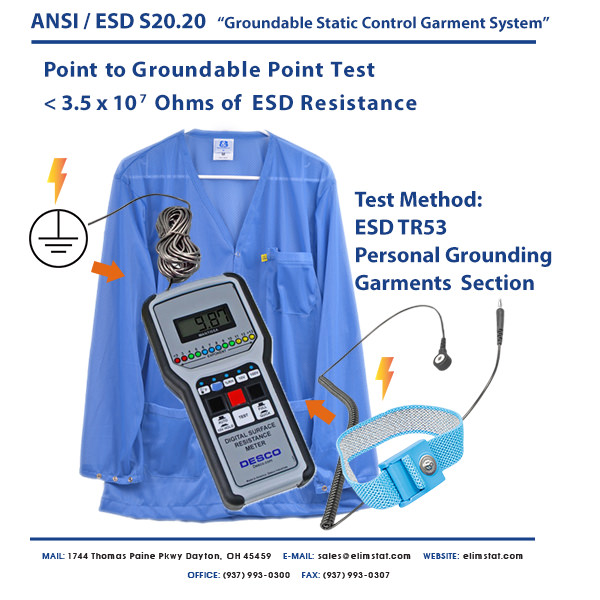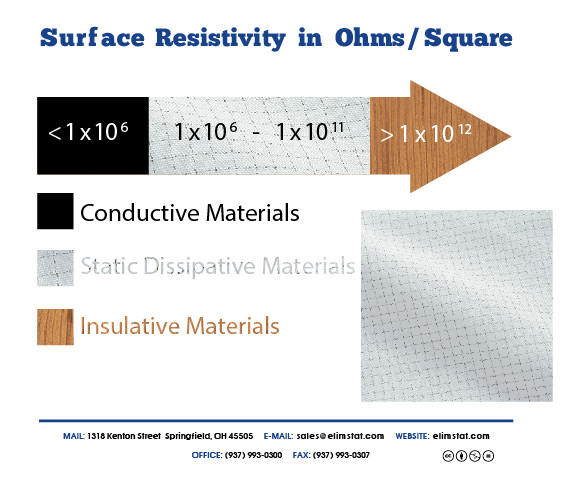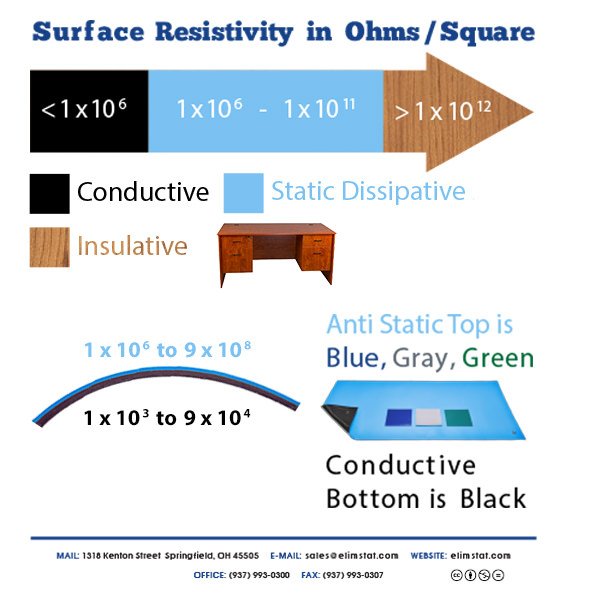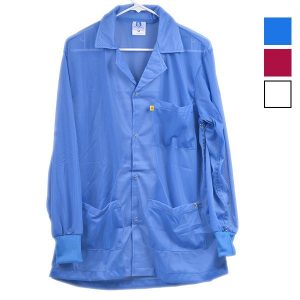Mat Testing- Worksurfaces (S4.1) Test Methods
Test Procedure in accordance with ANSI/ESD S4.1 section 6.4 Periodic Worksurface Testing:
• Do not clean surface. Remove from the surface only those items that might interfere with the test.
• ESD Sensitive devices shall also be removed.
Resistance Top-to-Top (RTT) Method
• Use two 5 pound electrodes and place them on the most commonly used area of the surface. Ensure that the electrodes are about 10″ apart from each other and 2″ away from any edge and 3″ away from any grounded point.
Resistance to Ground (RTG) Method
• Clip the black test lead to a grounded point.
• Use one 5 pound electrode on the other test lead and place the electrode on the furthest convenient point on the surface.
Test Continued
• Push and hold the Test Button until the surface resistance mantissa is displayed.
• Perform additional measurements by placing the electrode on the most commonly used or worn area. Set the meter to QUICK test mode to skip the 15 second period if preferred.
